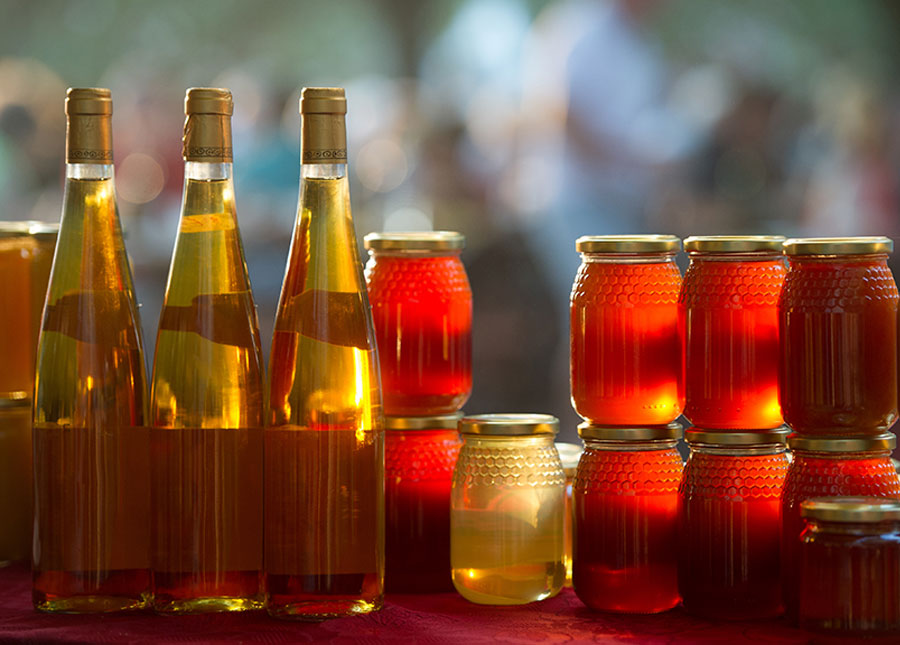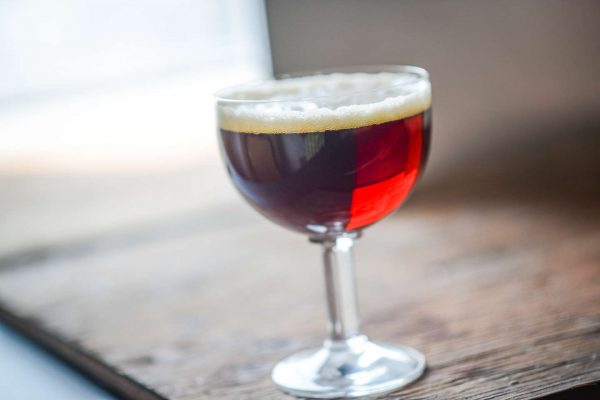
Meadmaking and medieval history are two passions of mine. They might seem worlds apart, but I’ve found they go hand in hand! Exploring medieval mead recipes and experimenting with the techniques have taught me some interesting tips that I can use for naturally making mead at my homestead in the rolling hills of New York’s Fingerlakes.
Living in an orchard area, I have a soft spot for cysers (mead made with cider) and came across two medieval mead recipes that caught my eye because of their mention of apples. The recipes appear in chapter 5 of Curye on Inglysch, a collection of some of the earliest known culinary recipes found in English, and it seems to include an early cyser recipe. I purchased the 14th-century English manuscript to try my hand at making my own medieval-style apple mead. To my surprise, the recipes as written did not work as suspected.
I double checked the editors’ translations of the recipes and found that the amounts did not add up, and the literal interpretation did not make sense either. But what really bothered me is that while the apple mead I created tasted OK, it was really difficult to keep from spoiling. Something was not right. Instead of changing the original recipes to fit my modern needs, I wondered if the recipes had been wrongly interpreted…
For reference, here are the two recipes from the original manuscript:
9 To make mede.
Take hony combis & put hem into a greet vessel & ley thereynne grete stickis, & ley the weight theron til it be runne out as myche as it wole; & this is called liif hony. & thanne take that forseid combis & sethe hem in clene water, & boile hem wel. After presse out thereof as myche as though may & caste it into another vessel into hoot water, & sethe it wel & scome it wel, & do therto a quarte of liif hony. & thanne lete it stone a fewe dayes wel stoppid, & tis is good drinke.
10 To make fyn meade & poynaunt.
Take xx galouns of the forseid pomys soden in iii galouns of fyn wort, & i galoun of liif hony & sethe hem wel & scome hem wel til thei be cleer enowgh; & put therto iii penyworth of poudir of peper & i penyworth of poudir of clowis & lete it boile wel togydere. & whanne it is coold put it into the vessel into the tunnynge up of the forseid mede; put it therto, & close it wel as it is aboue said.
Lost in Translation
The first clue that something wasn’t right was that the translations had two mead recipes, and the second one—one with the possible apples—referred back to “cooked apples” used in the first recipe. But the first recipe did not use apples at all; it listed how to make plain mead. So what could that pesky word mean instead?
The questionable word was pomys, which looks a lot like pomace, the solid leftovers from making apple cider. So, at first, the editors’ translation of pomys as apples made perfect sense. Except the recipe does not work using apples! So what else could it have been?
Looking a little deeper into the meaning of the word, I found pomace means fruit pressings in general. The previous recipe did not use any other fruit either, but it did have something that was pressed: honeycomb.
[LEARN how to make mead at home]
The instructions of the first mead recipe are to boil and simmer the honeycomb to make a must, the term for unfermented mead. At the end of all that boiling, it instructs one to press out the remaining comb. The problem is there won’t be any honeycomb left because the wax will melt during the boil, and cooling down the must does not make it reappear. After doing several iterations of this recipe, the only way I could make sense of it was by not translating the words “boyling” and “seething” literally, but as the process of heating.
If the must is heated enough for the honey to dissolve, but not so much that the wax would melt, the resulting wet comb could be pressed to get the last bits of liquid out. This fit the description sodden pomys quite perfectly. This technique of heating below boiling so as not to hurt the skin, then using your hands to work the comb, break it up and get it all to dissolve well, is straight from a medieval beekeeping manual and a very functional way to process loose (and old, crystallized) honeycomb.

And, interestingly enough, if the must is never heated above the melting point of wax, the ambient osmophilic honey yeast survives. As it has slightly higher temperature tolerances than traditional beer/wine yeasts (154°F instead of 120°F) it now has a nice competition-free start in a sugar-rich must.
The second mead recipe lists a number of ingredients in odd proportions, including malt, honey, pomys, and spices. It instructs one to put all the ingredients in a vessel in the barrel of the “forseid” mead. At first I thought of a scribal error—did the scribe really mention the barrel twice?—and then it hit me: the recipe says to make a sweetened flavoring to add back to the mead made in the previous recipe! The “pomys” is not there to add to the sugars; it is there to add to the flavor profile. I learned from making many “hive” meads that wax—especially broodwax, which is used to store pollen and bits of propolis—adds a significant earthy spiciness to the brew. Combined with the pepper and cloves also mentioned in the recipe, this makes for a very nice, rather complex flavor profile.
[ACCESS hundreds beer, mead, and cider recipes]
Medieval Mead Recipes Reinterpreted
So after setting out to recreate a medieval cyser recipe, I ended up emulating a medieval braggot while also learning to work with parts of the hive that I might otherwise have scrapped. But then again, being frugal is both a homesteading and medieval kind of thing!
The following are my interpretations of the recipes.
Recipe 9: To make mead.
Take honeycombs, and put them into a big vessel & lay in there big sticks, & lay the weight on it [of the combs] until it runs out as much as it would; & this is called life honey. & then take those mentioned combs & simmer [heat] them in clean water [not hotter than your hands can take], & boil [cook] it well. After press out of it [the combs] as much as you can & cast it [the liquid] into another vessel into hot water, & heat it well, & scum it well, & do thereto a quart of life honey. & then let it stand a few days well closed up, & this is a good drink.
Recipe 10: To make fine mead, and poignant.
Take 20 gallons of the previously mentioned pomys [the squeezed combs of recipe 9] cooked in 3 gallons of fine wort, & take 1 gallon of life honey & heat it well [below 154 ºF, and the ambient yeast will survive] & scum it well until it is clear enough; & add to it 3 pennyworth powder of pepper & 1 pennyworth powder of cloves & let it cook well together. & when it is cold put it into the vessel of the barreled up previously mentioned mead [add it back into the barrel the 20 gallons came out off]; add it to it, & close it well as it is said before.
For more information on medieval meadmaking, take a look through my collection of medieval brewing recipes.
* * *
As a homesteader and medieval reenactor, Susan Verberg enjoys researching alternative ingredients and old fashioned techniques. Verberg primarily brews mead and keeps bees when possible, but also occasionally dabbles in historic—especially herbed—beers. For more on Verberg’s mead brewing, check out her collection of medieval recipes and techniques.
Sources:
- The original transcriptions, and the suggestions for interpretation, can be found in the Early English Text Society publication by Constance Hieatt & Sharon Butler (ed). Curye on Inglysch, English culinary manuscripts of the 14th century (including the Forme of Cury). London: Oxford University Press, 1985.
- Butler, Charles. The Feminine Monarchie. 1609. Oxford: 1623.
- Hyll, Thomas. A Profitable Instruction of the Perfite Ordering of Bees. London: by Henrie Bynneman, 1579.
- Lawson, William. A New Orchard and Garden. London: by Nicholas Okes at the Golden Vnicorne, 1631.
- Platt, Hugh. Jewell House of Art and Nature. London: Peter Short, 1594.
- Verberg, Susan. Of Honey, a Collection of Mediaeval Brewing Recipes. 2017.



Share Post